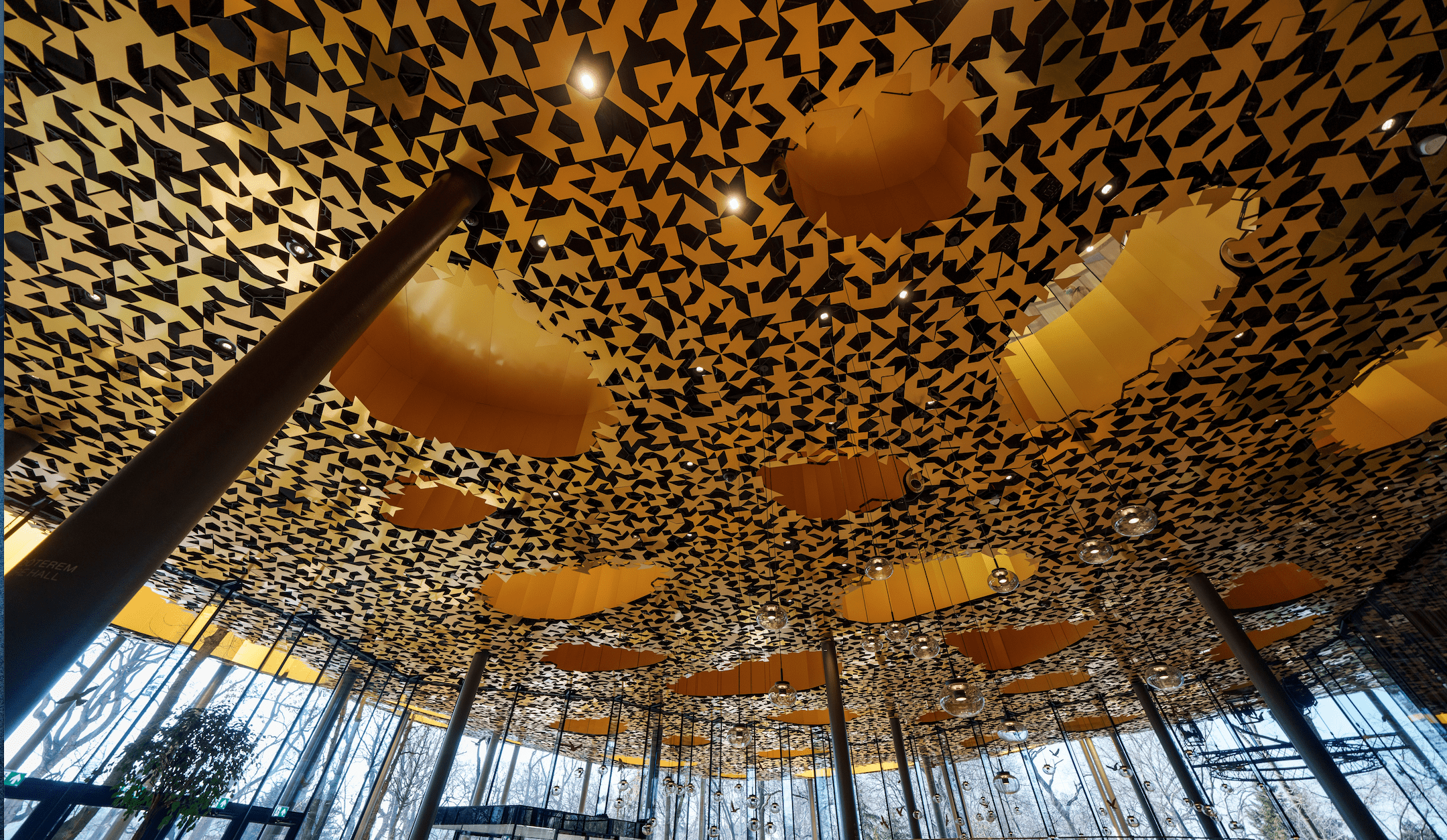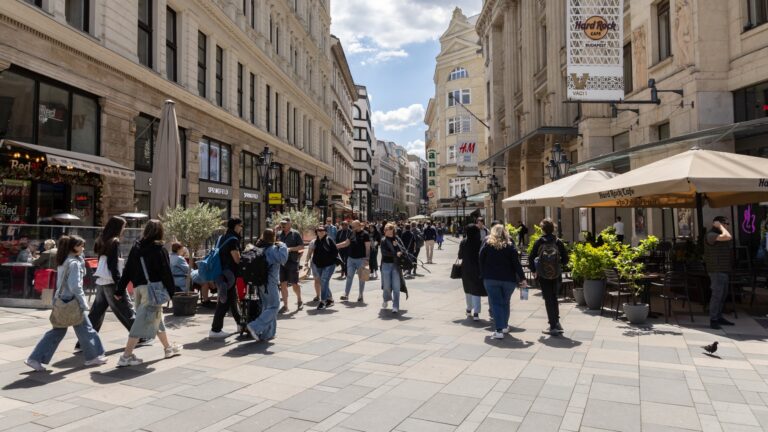A golden shimmer of light between still barren trees, undulating glazed surfaces, and masonry walls under the cheese-like perforated roof—a true architectural phenomenon was erected by the beginning of this year between the ancient trees of Városliget (City Park): the House of Music, Hungary.
Budapest is famous for its architectural heritage, featuring many spectacular buildings of high aesthetic value, most of which date back to the nineteenth century and the beginning of the twentieth century. This was the period when Budapest—as one of the capitals of the Austro-Hungarian Empire—was growing up from being a dreamy baroque city into a full-blown international metropolis in a matter of 20–30 years, at a pace which was only seen in major American cities like New York and Chicago. All tourists who have visited Budapest will remember the Fishermen’s Bastion, the Parliament building, the Basilica, the towers and domes of palaces and churches above the city—an ensemble of architectural signs evoking a golden age in the past, beautifully retouched by now as a result of the wave of reconstruction projects completed over the last ten years.
New architectural landmarks have failed to spring up in the urban landscape of Budapest for decades
Since that golden age, more than a century has passed. Even though exciting modernist structures were erected between the two world wars, and the communist period after the Second World War also produced a few buildings of lasting value, truly significant and internationally acclaimed new architectural landmarks have failed to spring up in the urban landscape of Budapest for decades.
This has been changed by the House of Music, Hungary, handed over at the beginning of 2022, bringing Budapest into the forefront of contemporary international architecture overnight.

Why? First, let us consider the architect. Sou Fujimoto is an ambitious new star of Japanese and international architecture who has been creating eye-catching but thoroughly considered structures, interesting for both experts and tourists, based on a sophisticated and easy-to-understand philosophy.
The architect, born in 1971, produced designs of exciting buildings and pavilions first in Japan, and subsequently in London and Paris. The House of Music, Hungary, is one of the largest and most complex designs of his that have been executed so far.
To understand Sou Fujimoto, it is important for us to be aware that he published his essay–manifesto Primitive Future in 2008 outlining his architectural philosophy. His line of reasoning traces architecture back to the prehistoric period, the world of intuitive thinking, when structures were created freely, without constraints, leaving them open to different possibilities. In the age of bureaucratization (also impacting architecture), the Japanese star designer has been dreaming up playful, light-hearted buildings and structures which can be used for various purposes, thus capable of satisfying constantly changing human needs.
‘Complex simplicity’, was the catch-phrase picked by a critic to sum up the work of the Japanese architect, and this complex simplicity is indeed manifested in the House of Music, Hungary.

But what kind of building is it? Practically, it is a more serious and more playful, extended contemporary version of a traditional music pavilion in a park. The enormous punctured slice of golden cheese for a roof is much larger than the building footprint itself—the trees in front of the entrance can grow up into the sky through the openings in the canopy. Under the roof, the surrounding trees and buildings are reflected in the glazed surfaces around the entire building.
It is not just a simple entrance hall, but a living central space
Inside, visitors who were flowing in great numbers to see the programs and the sights offered by the building for weeks after its opening are welcomed by a spacious hall. It is not just a simple entrance hall, but a living central space, with a small auditorium with steep rows of benches in one corner, and an always buzzing café and restaurant behind it in another. The main auditorium also opens from this space, and the hall is crossed vertically by the winding stairs, the spinal cord of the House of Music: it provides convenient access to exhibition areas in the basement, and the rooms upstairs. This spiral staircase assumes diverse shapes, even evoking the iconic spiral of New York’s Guggenheim Museum.
The permanent exhibition in the basement shares with awed visitors the history—and magic—of music with the help of the most advanced interactive tools. The sound dome and the sound space also contribute to the experience of the miracle of music.
Upstairs, a multimedia library and rooms of music pedagogy bring the world of music closer to both younger and older generations. The little ones can use up the energy they may have left after visiting the House in the music-themed, clinking-clanking playground outside.
According to a review, the House of Music, Hungary is ‘more like a statue than a building’. This sounds like unconditional laudation, but it is not necessarily true. No matter how sculptural, the House of Music is a genuine building, drawing a never-ending flow of visitors who keep coming for the novelty of the environment it offers, and to plunge into the world of sounds, the magic of music.
It can already be stated about the new architectural landmark of Budapest that it is a new place of pilgrimage for both Hungarians and visiting tourists—in the green heart of City Park.







